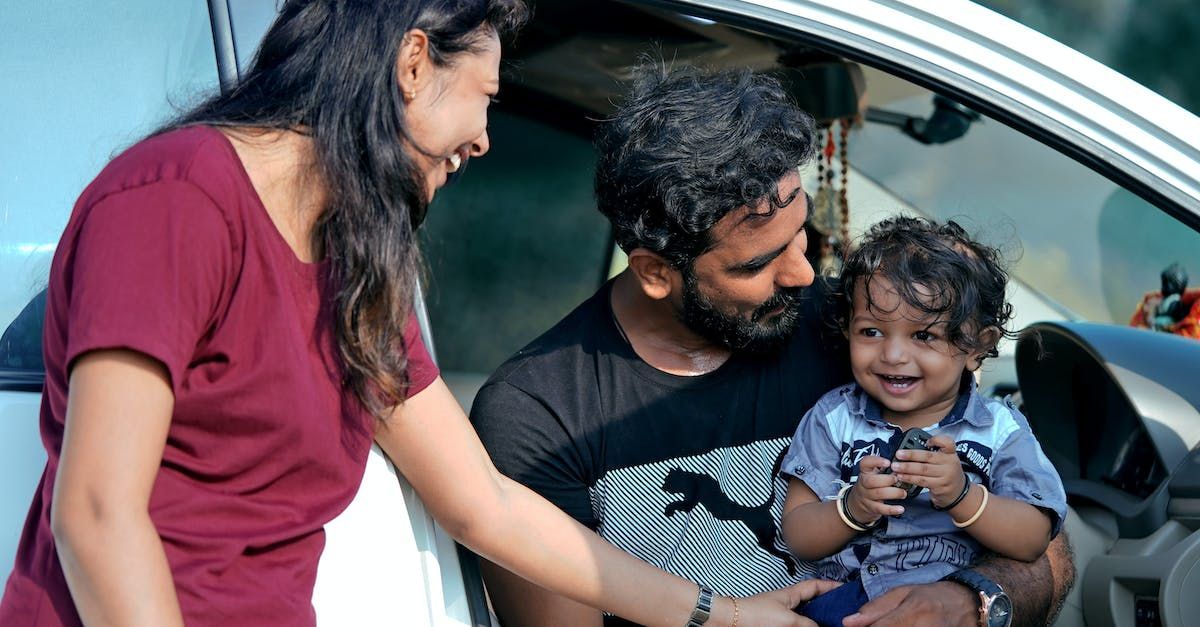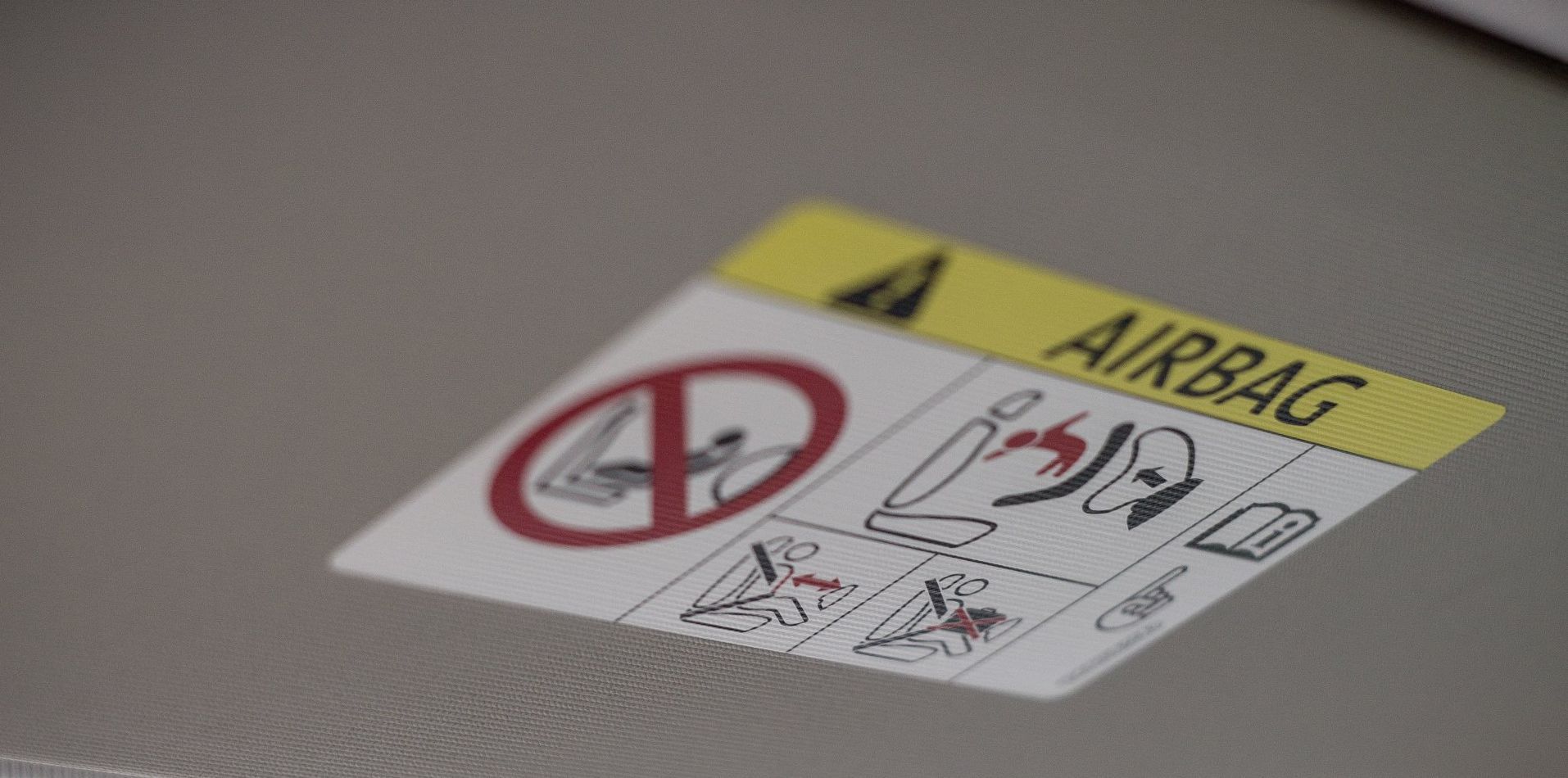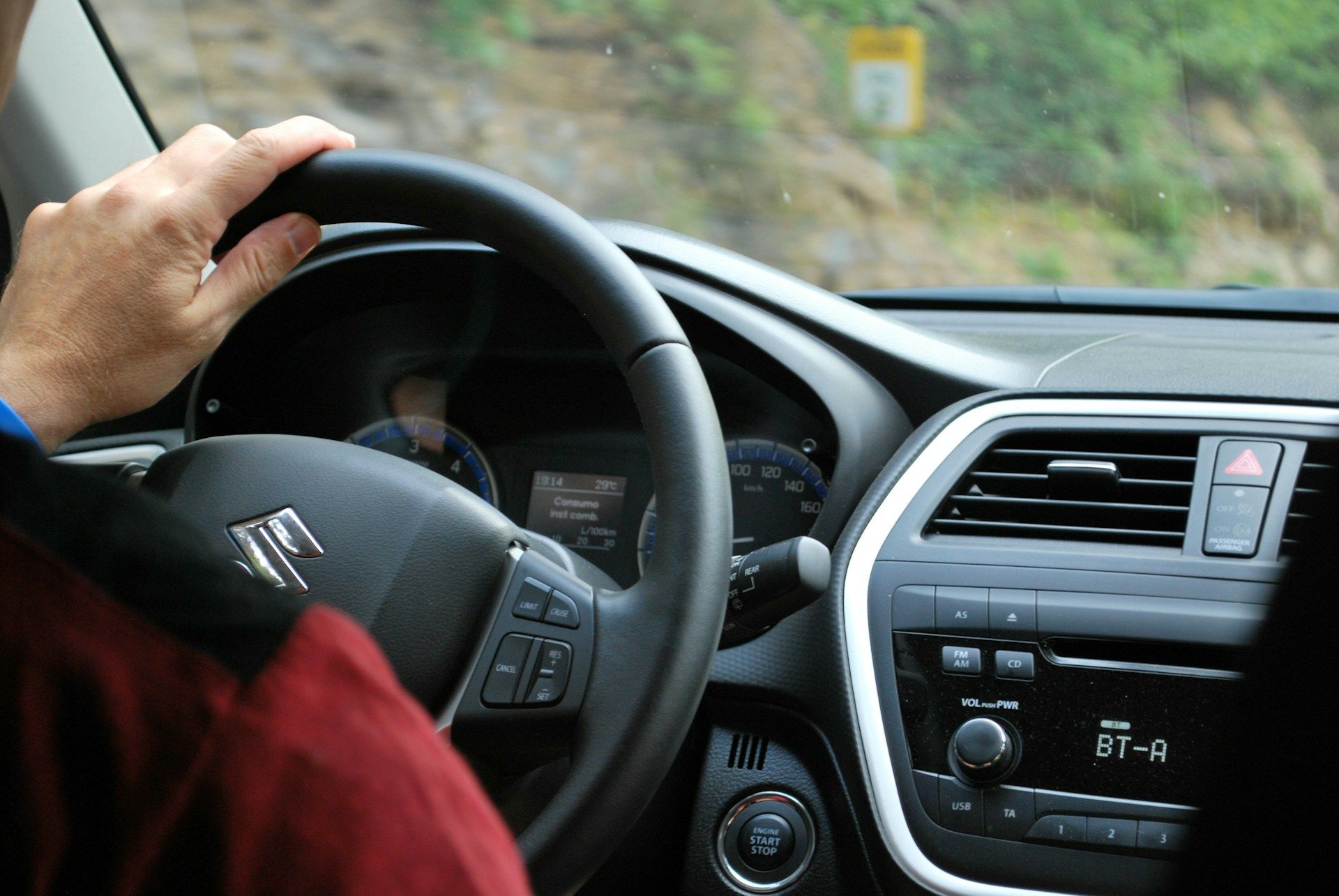Let's talk about your case
You can schedule a call with one of our lawyers anytime. Call today and get the help you need.
Or fill out our online form, and we will respond within 24 hrs.
Expert Tips for Car Seat Installation
Ensure Safe Car Seat Installation
Car seat installation is a crucial aspect of child passenger safety. Whether you're a parent, grandparent, or caregiver, it's important to understand the proper way to install car seats to ensure the safety of your little ones on the road. In this blog, we will guide you through the different types of car seats, provide guidelines for rear-facing and forward-facing car seats, offer safety measures for booster seats, and discuss important considerations when shopping for car safety seats. By following the correct installation procedures, you can have peace of mind knowing that your child is protected while traveling. Let's delve into the world of car seat safety and learn how to ensure safe car seat installation.
Understanding Car Seat Types
Car seats come in different types, each designed for specific age ranges and weight limits. It's crucial to understand the different car seat types before making a decision. The three main types of car seats are infant car seats, convertible car seats, and booster seats. Infant car seats are rear-facing seats suitable for newborns and young babies. Convertible car seats can be used both rear-facing and forward-facing, accommodating different stages of your child's growth. Booster seats are designed for older children who have outgrown forward-facing car seats and need assistance to position the vehicle seat belt correctly.
Infant Car Seats
Infant car seats are specifically designed for newborns and young babies. They are rear-facing, providing crucial safety by supporting the child's head, neck, and spine in the event of a crash. These car seats are equipped with harness straps to secure the child passenger, keeping them safe and protected. Rear-facing car seats have been proven to be the safest for infants, reducing the risk of injury or fatality. It's important to adhere to the car seat manufacturer's instructions when using an infant car seat, including height and weight limits. Investing in a quality car seat from a reputable manufacturer ensures the highest standards of child passenger safety.
Convertible Car Seats
Convertible car seats are a versatile option that can be used in both rear-facing and forward-facing positions. These car seats are designed to grow with your child, accommodating different stages of their growth. Convertible car seats typically have higher weight limits than infant seats, allowing for extended rear-facing use. Proper harness strap placement is crucial when using convertible car seats, ensuring the child passenger is securely fastened. It's important to follow the car seat's weight limit and transition from rear-facing to forward-facing when the child meets the requirements. Correctly installing the convertible car seat in the vehicle seat, following the correct belt path, is essential for the safety of the child.
Booster Seats
Booster seats are intended for older children who have outgrown forward-facing car seats but are not yet ready to use the vehicle seat belt alone. Booster seats elevate the child passenger, enabling the vehicle seat belt to fit correctly across their lap and shoulder. This ensures the maximum protection against injuries in the event of a crash. It's important to choose a booster seat that is appropriate for the child's weight, height, and age. The booster seat should position the vehicle seat belt across the child's shoulder and lap, avoiding the neck or stomach. Installation of the booster seat in the back seat of the vehicle, following the correct belt path, is crucial for optimal safety.
Guidelines for Rear-facing Car Seats
Rear-facing car seats provide the best protection for young children, absorbing the impact of a crash and distributing forces across the child's body, reducing the risk of injury. It is recommended to keep children in rear-facing car seats for as long as possible, following the weight and height limits of the car seat. In this section, we will discuss the selection of the right rear-facing car seat and provide installation tips to ensure the safety of your child.

Choosing the Right Rear-facing Seat
Selecting the appropriate rear-facing car seat for your child is crucial for their safety on the road. Consider the child's weight, age, and height when choosing a rear-facing seat. Make sure the car seat meets industry safety standards and is certified by the manufacturer. Ensure the car seat is rear-facing and is suitable for your child's weight and height. Additionally, check if the car seat has lower anchors for easy installation. Pay attention to the maximum weight limit specified by the car seat manufacturer to ensure the child passenger is within the safe weight range for rear-facing travel.
Safe Installation Tips for Rear-facing Seats
Properly installing a rear-facing car seat is essential for the child's safety. Follow these tips to ensure a safe installation:
- Use the vehicle's tether anchors or latch system, if available, for secure installation.
- Route the seat belt or latch strap through the correct belt path according to the car seat manufacturer's instructions.
- Ensure the car seat is at the correct angle, typically between 30 to 45 degrees, to provide optimal protection.
- Double-check the tightness of the harness straps, making sure they are snug and properly positioned at or below the child's shoulders.
- Consult the car seat instruction manual for specific installation guidelines and tips.
Guidelines for Forward-facing Car Seats
As children grow, they eventually transition from rear-facing to forward-facing car seats. This section will provide guidelines and safety considerations for making this transition, ensuring the child's continued safety on the road.
Transitioning from Rear-facing to Forward-facing Seats
Knowing when and how to transition from a rear-facing car seat to a forward-facing seat is important for child safety. Consider the following when making the transition:
- Transition from rear-facing to forward-facing when the child reaches the weight and height limits of the rear-facing car seat.
- Ensure the child's shoulders are above the lower harness straps of the rear-facing seat before transitioning.
- Utilize the top tether, if available, in addition to the harness straps, for a secure forward-facing installation.
- Follow the car seat manufacturer's instructions and the vehicle owner's manual for proper use of the vehicle seat belt with the forward-facing car seat.
- Always position the car seat properly, either in the front seat or back seat, depending on the age, weight, and height of the child.
Safe Installation Tips for Forward-facing Seats

Safe installation of forward-facing car seats is crucial for the child's protection. Follow these tips for a secure installation:
- Utilize the top tether anchor, if available, to ensure a sturdy connection between the car seat and the vehicle.
- Route the seat belt or latch strap through the correct belt path, following the car seat manufacturer's instructions.
- Anchor the top tether strap to the designated anchor point in the vehicle, ensuring proper tension.
- Consult a certified child passenger safety technician for assistance with forward-facing car seat installation.
- Regularly check the car seat manual and the vehicle owner's manual for the correct position, installation, and use of the forward-facing car seat.
Guidelines for Booster Seats
Once your child has outgrown forward-facing car seats, the next step is to transition to a booster seat. Enhanced booster seat safety measures, along with proper seat belt positioning, play a crucial role in protecting your child while traveling.
When to Switch to a Booster Seat
Switching to a booster seat is necessary when your child has outgrown the weight and height limits of the forward-facing car seat. Here are guidelines to help you determine the right time to switch:
- Switch to a booster seat when your child's ears are at the top of the seat, and their shoulders are above the lower harness straps of the forward-facing seat.
- Ensure the child weighs within the weight limit specified by the booster seat manufacturer.
- Children should remain in a booster seat until they are big enough for the vehicle seat belt to fit correctly, usually around the age of 8 to 12 years.
- Install the booster seat in the back seat of the vehicle, as it is the safest place for children of this age group.
Safe Installation Tips for Booster Seats
Proper installation of a booster seat is essential for child safety. Follow these tips for a safe booster seat installation:
- Position the shoulder straps of the vehicle seat belt across the child's shoulder, not the neck, for optimal safety.
- Ensure the lap belt fits low on the child's hips, not the stomach, to secure the child properly.
- Routinely check the correct belt path for the booster seat, following the manufacturer's instructions.
- Consult the vehicle owner's manual for guidelines specific to the vehicle regarding the installation of booster seats.
- Regularly review the booster seat manual and guidelines provided by the manufacturer for optimal safety.
Safety Measures for Older Children and Seat Belts
As children grow older, they eventually transition from booster seats to using the vehicle seat belt alone. This section will discuss safety measures, including the appropriate age and guidelines for using seat belts, ensuring the continued safety of older children.
When is the Right Time to Move to Seat Belts?
The decision to move from a booster seat to using the vehicle seat belt depends on the child's age, height, and weight. Consider the following guidelines:
- Typically, children can move to using the vehicle seat belt alone when they reach the age of 8 to 12 years, depending on their height, weight, and maturity.
- Ensure the child can sit with their back against the vehicle seat, knees bent over the edge of the seat, and feet flat on the floor.
- The lap belt should fit low on the child's hips, not the stomach, to provide optimal protection in the event of a crash.
- The shoulder belt should cross the middle of the back, avoiding the neck or shoulder of the child passenger.
- Always emphasize the importance of wearing the seat belt correctly and consistently, even for short trips.
Safe Use of Seat Belts for Older Children
Proper use of the vehicle seat belt is essential for the safety of older children. Follow these guidelines for the correct use of seat belts:
- Ensure the seat belt does not touch the child's neck or face, but crosses the middle of the back and shoulder.
- Instruct the child never to tuck the shoulder belt under their arm or behind their back, as it reduces the effectiveness of the seat belt.
- Encourage the child to keep the lap belt low and snug across the hips, not the stomach, providing the maximum protection in the event of a crash.
- Teach the child the importance of always wearing the seat belt, not only for long trips but also for short journeys around the neighborhood.
- Emphasize the role of the seat belt in ensuring their safety, reinforcing the habit of buckling up and setting a positive example as the adult driver.
Car Seat Installation Checklist
To ensure the safety of your child, always perform a thorough car seat installation checklist before each journey. This section will guide you through the pre-installation, during installation, and post-installation checks to guarantee the car seat is properly installed and secure.
Pre-Installation Checks
Before installing your child's car seat, conduct the following pre-installation checks:
- Read the car seat manual thoroughly, familiarizing yourself with the specific installation instructions for the seat.
- Consult the vehicle manual to understand the vehicle's seating positions, latch system, and anchor points for car seat installation.
- Ensure the child meets the age, weight, and height requirements for the car seat and the correct forward-facing and rear-facing guidelines.
- Verify that the car seat has the appropriate safety certifications and meets industry safety standards.
- Consider attending child passenger safety courses or seeking advice from certified technicians to ensure correct car seat installation practices.
During Installation Checks
During the car seat installation process, make the following checks for a secure installation:
- Position the harness straps comfortably close to the child's shoulders, avoiding any twists or excess slack.
- Confirm that the seat belt or latch strap is threaded through the correct belt path, following the car seat manufacturer's instructions.
- Check the back of the seat, ensuring it is firmly and snugly in contact with the vehicle seat, without excessive movement.
- Verify the correct tension of the seat belt or latch strap, making sure the car seat is tightly secured to the vehicle seat.
- Review the car seat manual, vehicle manual, and manufacturer's instructions for the specific installation steps and details.
Post-Installation Checks
Last but not least, perform the following post-installation checks to ensure the car seat is correctly installed:
- Secure the tether strap, if available, according to the car seat manufacturer's instructions, providing additional stability.
- Confirm the seating position of the car seat, whether it is in the front seat, back seat, or middle of the back seat, depending on the child's age, weight, and height guidelines.
- Regularly check the car seat for any signs of wear and tear, including loose straps, damaged harness buckles, or worn-out padding, and replace any parts as necessary.
- Continually educate yourself about car seat safety, keeping up with the latest guidelines and recommendations from transport Canada and relevant safety organizations.
- Ensure you are maintaining the car seat according to the manufacturer's instructions, cleaning it regularly, and checking for any recalls or safety updates.
Professional Help and Training for Car Seat Installation

When it comes to car seat installation, seeking professional help and training can provide valuable guidance and ensures the safety of your child. In this section, we will discuss when and where to seek professional assistance and the importance of car seat installation training.
When and Where to Seek Professional Assistance
Professional assistance can help ensure correct car seat installation, especially if you feel unsure or overwhelmed. Consider the following scenarios for seeking professional help:
- Visit a car seat clinic or contact a certified technician for guidance and hands-on assistance with rear facing, forward facing, and booster seat installations.
- Seek local technicians who specialize in child passenger safety and can provide personalized advice based on your specific vehicle and car seat combination.
- Consult the vehicle manual for latch system and seat belt installation instructions, and ask a certified technician for clarification if needed.
- Discuss the safest seating position for the car seat, whether in the front seat, back seat, or middle of the back seat, with a local technician or car seat clinic expert to ensure optimal safety.
Importance of Car Seat Installation Training
Car seat installation training is of utmost importance for every parent, grandparent, and caregiver. Here's why:
- Certified child passenger safety technicians provide specialized knowledge and expertise in car seat safety, ensuring correct installation and usage.
- Training sessions offer important car seat safety tips and guidelines, helping you stay up to date with the latest industry recommendations.
- Organizations like transport Canada emphasize the importance of car seat safety and offer resources to help parents and caregivers make informed decisions.
- Education from a certified technician ensures understanding of crucial aspects, such as the correct belt path, top tether installation, and the safest car seat position.
- Transport Canada and other relevant safety organizations provide access to valuable information and resources, helping you navigate the world of car seat safety with confidence.
Considerations for Second-hand and Expired Car Seats
Using second-hand or expired car seats can pose safety risks to your child. In this section, we will address the potential dangers associated with second-hand car seats and the importance of handling expired car seats correctly.
Risks Associated with Second-hand Car Seats
While it may seem like a budget-friendly option, there are risks associated with using second-hand car seats. Consider the following safety measures:
- Second-hand car seats may have been involved in previous accidents, compromising their safety.
- Verify the car seat's history and ensure it has not been recalled, damaged, or altered in any way.
- Inspect the car seat thoroughly, including checking for any signs of wear, tear, or structural damage.
- Avoid purchasing car seats from unknown sources or online marketplaces, as the history and condition of the seat may be questionable.
- Opt for a new car seat whenever possible, as it guarantees the highest safety standards and reduces the risks associated with second-hand seats.
How to Check for and Handle Expired Car Seats
Expired car seats are no longer considered safe for use, as the materials and safety features may have degraded over time. Follow these guidelines when handling expired car seats:
- Check the manufacturer's instructions or the car seat manual for the expiration date of the seat, usually located on the back or bottom of the seat.
- If the car seat has expired, it should be disposed of responsibly and replaced with a new seat.
- Properly discard the expired car seat to ensure it will not be reused or put another child at risk.
- Refer to the vehicle owner's manual for instructions on the disposal of expired car seats, as regulations may vary depending on the region.
- Never attempt to use an expired car seat, as it may not provide adequate protection in the event of a crash.
Legal Implications of Incorrect Car Seat Installation
Ensuring correct car seat installation is not only crucial for the safety of your child but also has legal implications. In this section, we will discuss the importance of understanding the laws and fines associated with car seat safety and the role of law enforcement in ensuring compliance.
Understanding the Laws and Fines
It is essential to familiarize yourself with the laws and fines related to car seat safety. Consider the following:
- The national highway traffic safety administration (NHTSA) sets guidelines and regulations regarding child passenger safety, including the correct use of car seats.
- Different jurisdictions may have specific laws and requirements, such as age, weight, and height guidelines for car seat use.
- Failure to comply with car seat safety laws can result in fines, penalties, or legal consequences, depending on the jurisdiction.
- Understanding the legal implications of incorrect car seat installation ensures compliance with the law, protecting yourself, your child, and other passengers on the road.
- Check local regulations, consult the NHTSA website, or seek advice from local law enforcement for the most accurate and up-to-date information.
Role of Law Enforcement in Ensuring Car Seat Safety
Law enforcement plays a vital role in enforcing car seat safety regulations. Consider the following aspects:
- Law enforcement officers receive special training in child passenger safety and are responsible for enforcing car seat safety laws.
- They may conduct car seat inspections and issue citations or warnings for non-compliance.
- Law enforcement officers collaborate with local child passenger safety organizations, car seat clinics, and certified technicians to ensure proper car seat installation, usage, and compliance with safety standards.
- They educate the community about the correct use of car seats, vehicle seat belts, and child passenger safety, promoting awareness and encouraging compliance.
- Cooperation with law enforcement helps create a safer environment for children on the road, reducing the risks of injuries and fatalities.
Shopping Tips for Car Safety Seats
Choosing the right car safety seat for your child is a crucial decision. In this section, we will provide tips to consider when shopping for car seats, ensuring the safety and comfort of your little one.
Factors to Consider While Shopping for Car Seats

Consider the following factors when shopping for car seats:
- Prioritize car seat safety by selecting a seat that meets the highest safety standards and is certified by the manufacturer.
- Check the weight limit of the car seat, ensuring it accommodates your child's current weight and the recommended weight range for the seat.
- Consider the dimensions and shape of your vehicle seat, as car seat models vary in size and compatibility.
- Ensure the car seat has adjustable harness straps, allowing for a snug and secure fit as your child grows.
- Read reviews and seek recommendations from trusted sources to find car seat models that offer a good balance of safety, ease of use, and comfort.
Can a car seat be too tight?
While it's important to secure the child passenger, a car seat should not be overly tight. Consider the following:
- Car seats should be snug, but not too tight, to ensure the child's safety and comfort.
- Check that the harness straps are tight enough to pass the pinch test, where you cannot pinch any slack in the straps.
- Avoid excessive tightening of the harness straps, which can cause discomfort or restrict the child's movement.
- Avoid bulky clothing on the child, such as winter coats, as they can create additional space between the child and the harness, potentially compromising the security of the car seat.
- Always position the car seat in the correct upright position, ensuring the child is comfortable and properly protected in the event of a crash.
What are the common mistakes made during car seat installation?
Common mistakes made during car seat installation include not securing the seat tightly enough, using the wrong installation method for the car seat type, not properly positioning the harness straps, and not adjusting the seat to fit the child's size and weight.
CONCLUSION
In conclusion,
ensuring the safe installation of a car seat is crucial for the well-being of your child.
By understanding the different types of car seats, following guidelines for rear-facing and forward-facing seats, and implementing safety measures for older children, you can significantly reduce the risk of injuries in case of an accident. It is important to regularly check your car seat for any signs of wear and tear and seek professional help if needed. Remember that using second-hand or expired car seats can pose serious risks, so always opt for new and up-to-date models. By taking these precautions, you can provide your child with the highest level of safety while traveling.
Resources:
https://www.nhtsa.gov/equipment/car-seats-and-booster-seats
https://childsafetylink.ca/child-passenger-safety/car-seat-safety-resources/
https://childsafetylink.ca/child-passenger-safety/toolkits/
https://BabyCarSeatintallers.as.me/
https://seatsforkids.ca/clinics/ottawa
Let's talk about your case
You can schedule a call with one of our lawyers anytime. Call today and get the help you need.
Or fill out our online form, and we will respond within 24 hrs.
Thank you for contacting us.
We will get back to you as soon as possible. You can also book using this link: Personal Injury Booking Page
Please try again later
Related Blog Posts
Practice Areas
QUICK LINKS
CONTACT US
Tel: (613) 505- 5025
Fax: (613) 234-5852
info@wvgblaw.com
200-2571 Carling Avenue
Ottawa, Ontario
K2B 7H7
SERVICES
RECENT BLOG POSTS














